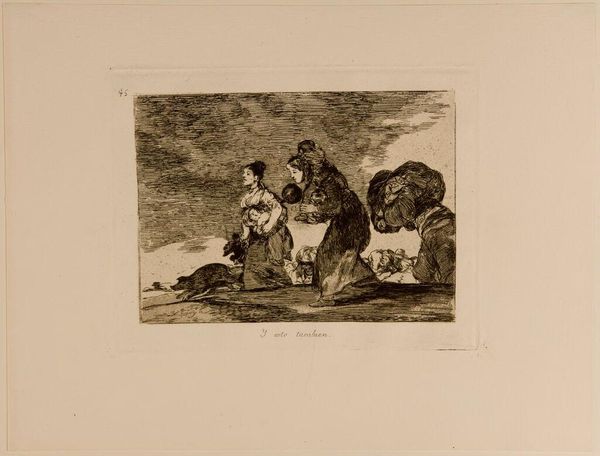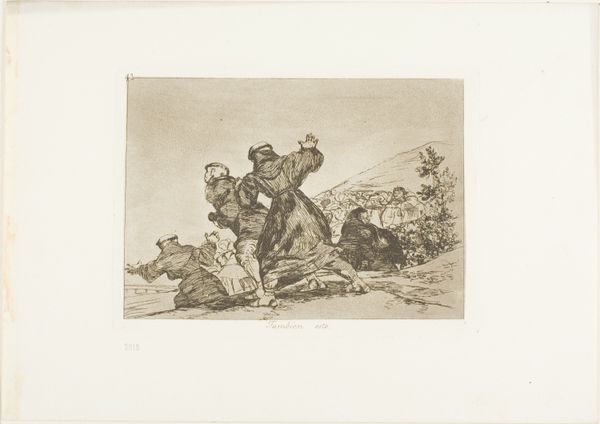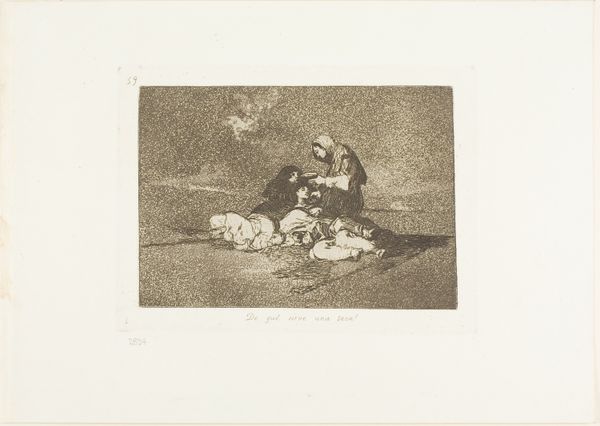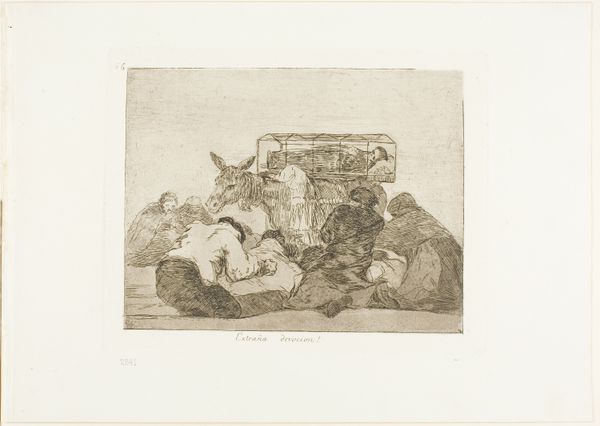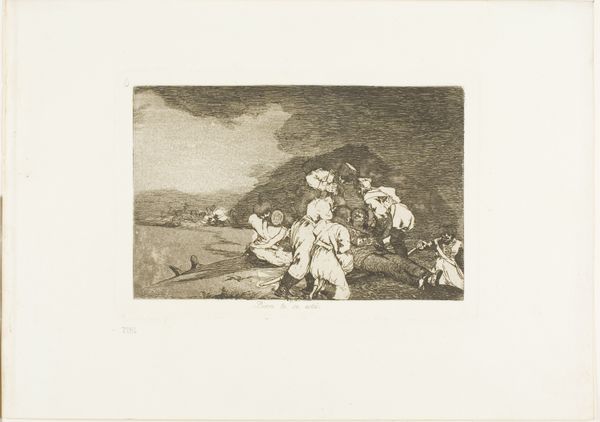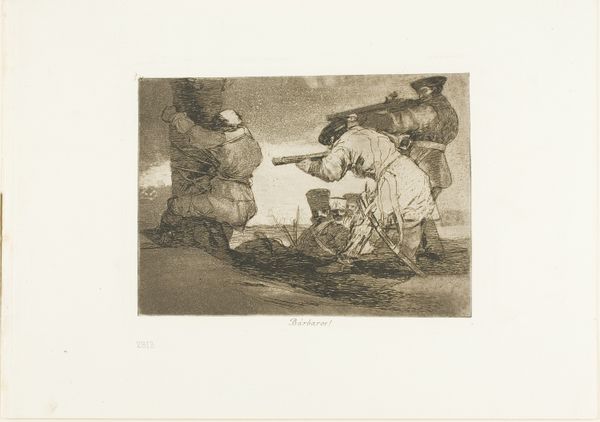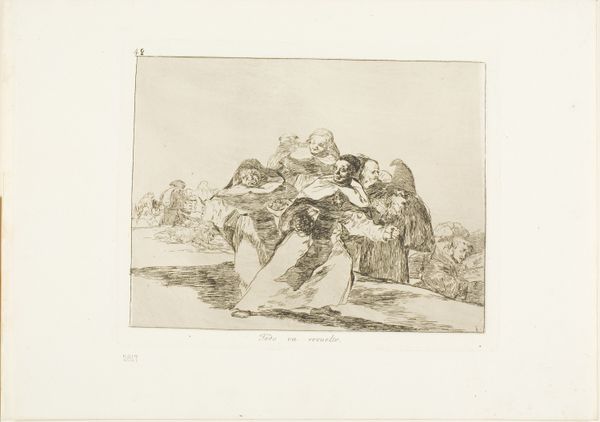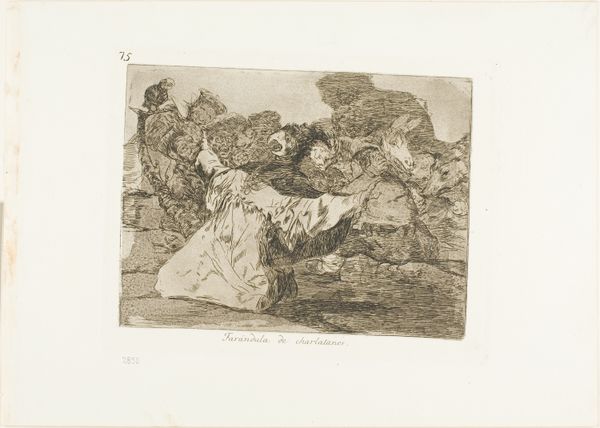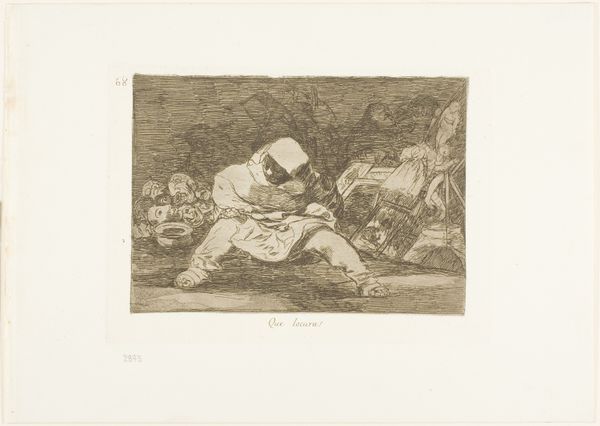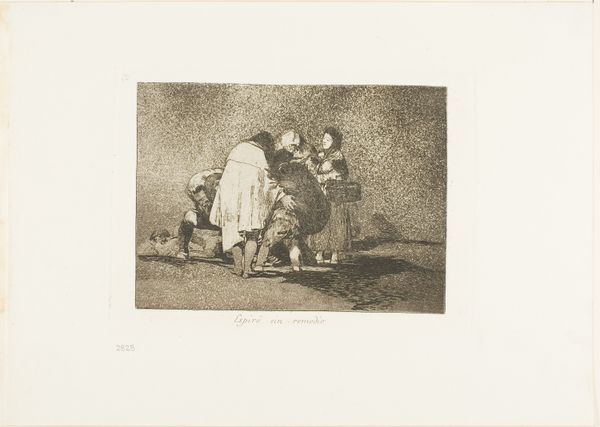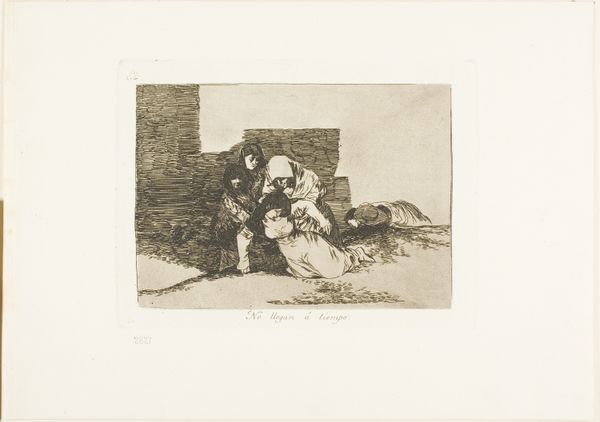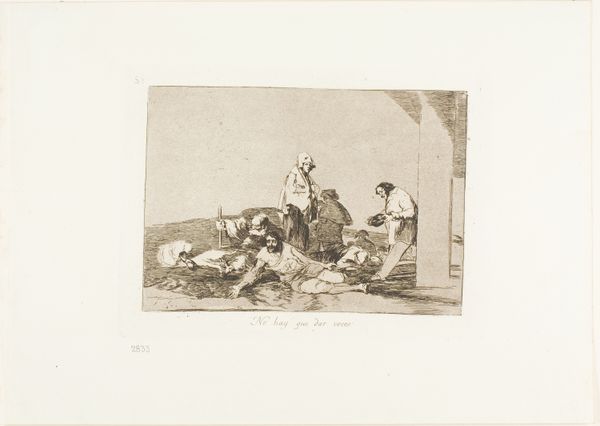
And this too, plate 45 from The Disasters of War Possibly 1812 - 1863
0:00
0:00
drawing, print, etching, paper
#
drawing
#
narrative-art
# print
#
etching
#
paper
#
romanticism
#
history-painting
Dimensions: 134 × 193 mm (image); 162 × 220 mm (plate); 240 × 340 mm (sheet)
Copyright: Public Domain
Editor: So, this is "And this too, plate 45 from The Disasters of War" by Francisco Goya, possibly made between 1812 and 1863. It’s an etching on paper, currently residing at the Art Institute of Chicago. There's such a somber mood to it, a real sense of desperation in the figures. What strikes you about this piece? Curator: What I see is Goya using the print medium, etching, to make a powerful political statement about the horrors of war and its impact on civilians during the Peninsular War. He's not just showing individual suffering, but the systemic breakdown of society and morality. The image shows women displaced by conflict, likely searching for food amidst corpses, if you notice the human remains by their feet. The Romantic style underscores intense emotion. But why choose printmaking for such a message? Editor: Well, prints can be reproduced, right? Was Goya aiming for a wide distribution, a way to influence public opinion about the conflict? Curator: Exactly! Consider that context. Goya isn't just an artist expressing feelings; he's strategically intervening in a political landscape. These prints, though not widely circulated in his lifetime, represent a powerful critique of war propagated through the art market today, a potent public statement against unchecked authority. Does that change how you see the figures' desperation? Editor: Absolutely, it shifts the focus from individual plight to a broader commentary on political and social failures. I guess I was initially responding to the immediate emotion, but now I understand the strategic intent. Curator: And it underscores the power of art to function beyond aesthetic appeal – it becomes a tool for social commentary and historical witness. I find myself questioning how different his message would be today, shared via other methods, to much wider and instantaneous audience. Editor: I hadn't thought of that – the medium *is* the message, as they say! This has totally broadened my view of Romanticism beyond just individual feeling.
Comments
No comments
Be the first to comment and join the conversation on the ultimate creative platform.
